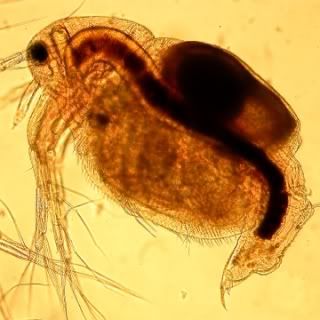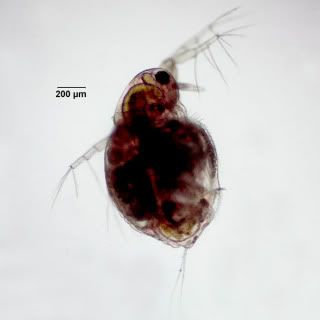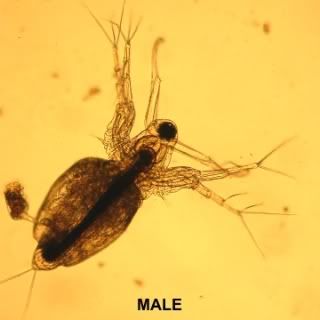Retirement and forum shutdown (17 Jan 2022)
Hi,
John Howell who has managed the forum for years is getting on and wishes to retire from the role of managing it.
Over the years, he has managed the forum through good days and bad days and he has always been fair.
He has managed to bring his passion for fish keeping to the forum and keep it going for so long.
I wish to thank John for his hard work in keeping the forum going.
With John wishing to "retire" from the role of managing the forum and the forum receiving very little traffic, I think we must agree that forum has come to a natural conclusion and it's time to put it to rest.
I am proposing that the forum be made read-only from March 2022 onwards and that no new users or content be created. The website is still registered for several more years, so the content will still be accessible but no new topics or replies will be allowed.
If there is interest from the ITFS or other fish keeping clubs, we may redirect traffic to them or to a Facebook group but will not actively manage it.
I'd like to thank everyone over the years who helped with forum, posted a reply, started a new topic, ask a question and helped a newbie in fish keeping. And thank you to the sponsors who helped us along the away. Hopefully it made the hobby stronger.
I'd especially like to thank John Howell and Valerie Rousseau for all of their contributions, without them the forum would have never been has successful.
Thank you
Darragh Sherwin
Moina macrocopa
- Puddlefish (Colin McCourt)
-
 Topic Author
Topic Author
- Offline
- Senior Member
-

- Posts: 347
- Thank you received: 10
Another easy to culture cladoceran species
By
Puddlefish
Introduction
Keeping small Rivulus species presents the aquarist with a few problems on what to feed. Most species will take prepared and frozen morsels but some will not. Finding small live-foods other than the obligatory artemia and grindalworm can be a chore.
I have been cultivating Daphnia pulex indoors for some time now but I’m always on the lookout for new varieties or species to add to the killi-larder.
I became interested in Moina through reading articles in books and via internet research. This seemed an ideal food source; it lends itself well to home culturing and with pretty much minimal effort. I set about trying to locate a starter culture which I managed to about a year ago and I now have enough to feed my killifish and distribute starters to folks around the UK and further afield.
Natural History of Moina.
Kingdom: Animalia - Phylum: Arthropoda - Sub-phylum: Crustacea - Class: Branchiopoda
Order: Cladocera - Sub-order: Eucladocera - Family: Moinidae - Genus: Moina - Species: macrocopa
Moina macrocopa is pretty common and is widely distributed throughout the world; cultures have been collected in such geographical locations as North and South America, Africa, Europe & South East Asia. They are often found to inhabit temporary shallow pools with high nutrient levels.
Moina macrocopa are pretty small they are round in shape with adult males measuring around 0.5 – 0.9mm in length, females being slightly larger. They are an excellent food for fish with small mouths with juvenile monia being an excellent food supplement for small fry.
This small water flea species has a relatively large head which is almost half the length of its body, there is also a large compound eye in this region. Its carapace possesses two large antennas on the rear of its head followed by a further flexible antenna just below the eye. Further down the frontal carapace are two larger grasp like appendages. The clearly visible brood chamber is aft.
Moina are filter feeders, sifting all their food from the water column. Food is brought into the carapace by the utilisation of the frontal appendages by moving water across them. This food will be predominately algae but can also contain bacteria and organic detritus. Obviously the food has to be very small.
In order for Moina to grow, they moult like all cladocerans. Moulting occurs many times thought its short lifespan.
This small crustacea sp. lives for around 12 days, reaching their sexual and reproductive peak in approximately 5-10 days.
When conditions are favourable Moina reproduce via the cyclic parthenogenic method. Adult females produce unfertilised eggs which, after moulting, are deposited into their brood chamber; these eggs develop into juvenile females which are released at the next subsequent moult.
When conditions become adverse, the female will produce special eggs that will develop into males. Once these males reach maturity the female will then start producing haploid eggs. These eggs are fertilised by the males and released by the female upon a further moult to lie dormant in the substrate. This hard shell or Ephippium is very resistant to adverse conditions and will keep the next generation moina safe until favourable conditions return whereby the fertilised eggs will hatch and will all become parthenogenic females ensuring the survival of the species.
Moina Culture.
To culture this small cladoceran you need no more than a 3ltr Ice cream tub. I set them up much in the same way as I do for internal Daphnia.
I use rainwater to a neutral pH, spreading a substrate of aragonite sand to a depth of around 8mm on the bottom of the tubs.
The tubs are kept at a temperature of around 24’C with a night and day cycle of lighting performed by timers.
They will reproduce quite quickly under these conditions and soon the tubs will be amassed with small water fleas.
Feeding.
A word on feeding the culture must be mentioned at this stage. Whilst I do culture my own live Chlorella algae I found that Moina don’t do quite as well on this as they do on dried yeast. Here we have a bit of a problem as the yeast can pollute the culture if you’re not careful and it will crash and all will be lost. So we have to feed this sparingly alongside water changes with the same chemical makeup as before.
I make up one sachet of Dried Yeast dissolved in one litre of water. After which I feed 30-60ml of this mixture every other day. This seems to be an ideal maintenance program for my purposes.
Cultures will eventually become tired and need to be sub-cultured on a periodical basis to keep your supply going. You can add snails such a Red Ramshorn’s to the tubs to help keep them clean and they in turn will provide an extra food source for the Moina in the shape of infusorians.
A swarm of Monia macrocopa in one of my culturing tubs
Summary.
Moina is a very small cladoceran species that has higher protein content than daphnia and is excellent for fish and fry with small mouths. They are quite easy to culture and maintain provided you devote the time to meet their needs. Be careful not to overfeed and you should have and endless supply of this little gem to feed your charges especially in the cold winter months when live food becomes scarce.
I hope you enjoyed this article and I hope it provokes some folks not already doing so to take the reins and try culturing this type of food for their fish.
All stills imagery supplied with full permissions by
Professor James F. Haney
UNH Center for Freshwater Biology
Department of Biological Sciences
University of New Hampshire
Durham, NH
www.cfb.unh.edu/
Regards
Colin
Please Log in to join the conversation.
- JohnH (John)
-

- Offline
- Administrator
-

- Posts: 6067
- Thank you received: 857
Where, pray tell, can one obtain a starter culture for these little lads?
Added to 'Articles' section as well, hope that's OK?
John
Location:
N. Tipp
We're just two lost souls swimming in a fish bowl - year after year.
ITFS member.
It's a long way to Tipperary.
Please Log in to join the conversation.
- Puddlefish (Colin McCourt)
-
 Topic Author
Topic Author
- Offline
- Senior Member
-

- Posts: 347
- Thank you received: 10
I had to wait for photographic permissions to be granted as my new microscope hasn't arrived yet.
There is a huge demand for this sp. and I'm currently inundated with requests for a starter cultures but rest assured John I'll get round to you shortly.
Thanks for taking the time and interest to peruse my jottings
Regards
C
Please Log in to join the conversation.
- stretnik (stretnik)
-

- Visitor
-

Kev.
Please Log in to join the conversation.
- JohnH (John)
-

- Offline
- Administrator
-

- Posts: 6067
- Thank you received: 857
John
Location:
N. Tipp
We're just two lost souls swimming in a fish bowl - year after year.
ITFS member.
It's a long way to Tipperary.
Please Log in to join the conversation.
- Puddlefish (Colin McCourt)
-
 Topic Author
Topic Author
- Offline
- Senior Member
-

- Posts: 347
- Thank you received: 10
As I said earlier, I hope it gets some usage, and the same goes for the other muses.
John...I am looking to embellish this article a little further at a later date with more graphical content
will this present any problems when you wish to move it again.
I'm currently working on a few more articles alongside the Fruit-Fly Breed & Feed concept, but need to gain a lot more data before I make them available.
Thanks again for being so attentive in my devotion to these aspects of our hobby
Regards
Colin
Please Log in to join the conversation.
- JohnH (John)
-

- Offline
- Administrator
-

- Posts: 6067
- Thank you received: 857
We're having a bit of 'difficulty' moving the Youtube items, but that's being worked on.
I had left the Fruitfly feeder article as it seemed to be still 'in progress'.
Likewise with another one, but these can be copied over as soon as you give us the 'nod'.
John
Location:
N. Tipp
We're just two lost souls swimming in a fish bowl - year after year.
ITFS member.
It's a long way to Tipperary.
Please Log in to join the conversation.





